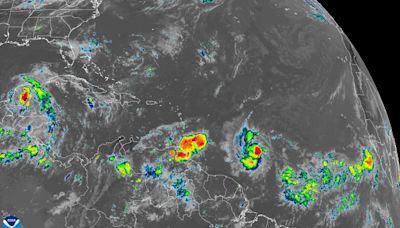Search results
A season is a division of the year based on changes in weather, ecology, and the number of daylight hours in a given region. On Earth , seasons are the result of the axial parallelism of Earth's tilted orbit around the Sun .
Seasons are periods in a year marked by specific weather conditions, temperatures and length of day. Most modern day calendars divide the year in 4 seasons: spring, summer, fall (autumn) and winter.
Dates are based on the Gregorian calendar. Times adjusted for DST if applicable. Current year is highlighted. The Seasons Calculator shows the times and dates of Vernal (Spring) & Autumnal (Fall) equinoxes and Summer and Winter solstices all over the world.
When do the four seasons start in 2024—for spring, summer, fall, and winter? Here are the equinox and solstice dates—plus, answers to common questions about the seasons of the year in North America.
The meaning of SEASON is a time characterized by a particular circumstance or feature. How to use season in a sentence.
Mar 12, 2024 · A season is a period of the year that is distinguished by special climate conditions. The four seasons— spring , summer , fall, and winter —follow one another regularly. Each has its own light, temperature , and weather patterns that repeat yearly.
May 31, 2024 · Season, any of four divisions of the year according to consistent annual changes in the weather. The seasons—winter, spring, summer, and autumn—are commonly regarded in the Northern Hemisphere as beginning respectively on the winter solstice, December 21 or 22; on the vernal equinox, March 20 or.
Feb 11, 2022 · Seasons are periods of the year with distinct weather conditions and day lengths. The four seasons — winter, spring, summer, autumn — can vary significantly in characteristics and can prompt...
Jun 13, 2024 · The Short Answer: Earth's tilted axis causes the seasons. Throughout the year, different parts of Earth receive the Sun's most direct rays. So, when the North Pole tilts toward the Sun, it's summer in the Northern Hemisphere. And when the South Pole tilts toward the Sun, it's winter in the Northern Hemisphere.
Seasons are caused by Earth's axial tilt and temperatures and nature's processes are affected. Because of Earth's axial tilt (obliquity), our planet orbits the Sun on a slant which means different areas of Earth point toward or away from the Sun at different times of the year.







